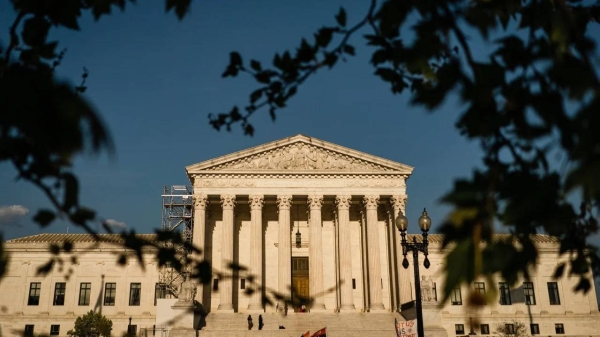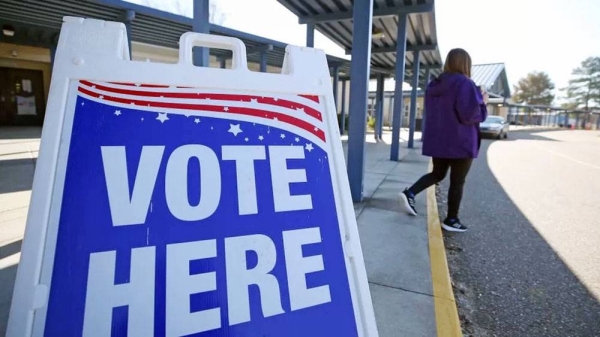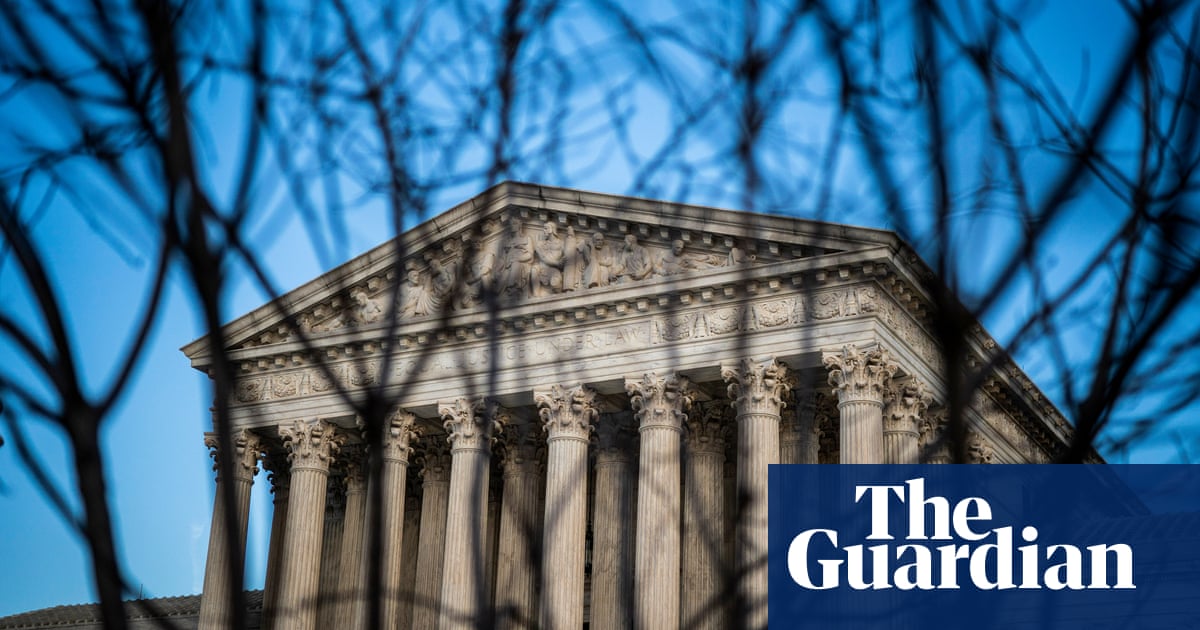
The Supreme Court on Thursday ordered Alabama officials to redraw the state’s congressional map to allow an additional Black majority district to account for the fact that the state is 27% Black.
The decision – that affords additional opportunities for minority voters to elect the candidate of their choice – comes as a surprise given the conservative majority on the court. Alabama currently has seven congressional districts, with six represented by Republicans.
Supporters of voting rights had feared that the court was going to make it harder for minorities to challenge maps under Section 2 of the historic Voting Rights Act.
Chief Justice John Roberts penned the opinion for a 5-4 majority, siding with the court’s three liberals. Justice Brett Kavanaugh agreed with the key parts of the holding, providing the fifth vote.
“We are content to reject Alabama’s invitation to change existing law,” Roberts said.
The fact that Roberts penned the decision is a surprise given that 10 years ago, the chief justice effectively gutted a separate section of the Voting Rights Act that required states with a history of discrimination to obtain federal approval before changing election laws.
In recent years, Section 2 has been instrumental in paving the way for minority voters to more fully participate in the political process, especially as they combat maps that appear to be neutral but actually entrench racial polarization. It bars voting rules that result in a denial or abridgment of the right to vote on account of racial discrimination.
Roberts wrote Thursday that Section 2 “may impermissibly elevate race in the allocation of political power within the States is, of course, not new,” but he said the opinion “does not diminish or disregard these concerns” he said.
“It simply holds that a faithful application of our precedents and a fair reading of the record before us do not bear them out here,” Roberts said. Alabama’s argument “runs headlong into our precedent.”
“A district is not equally open, in other words, when minority voters face – unlike their majority peers – bloc voting along racial lines, arising against the backdrop of substantial racial discrimination within the State, that renders a minority vote unequal to a vote by a nonminority voter. ”
Alabama’s Democratic Rep. Terri Sewell, the state’s first Black woman elected to Congress, said the Supreme Court’s decision will lead to more “equitable maps” in Alabama.
“I’m so happy that the justices saw the truth in the fact that that represents voter dilution and it’s black voter dilution,” Sewell said on CNN’s “News Central” Thursday.
“Everyone’s looking at this decision and I think that it will have a ripple effect, a positive ripple effect. It means that minority dilution is not going to be tolerated by the Supreme Court or by any court in the land and that is a huge victory,” Sewell added.
“Today’s decision rejects efforts to further erode fundamental voting rights protections, and preserves the principle that in the United States, all eligible voters must be able to exercise their constitutional right to vote free from discrimination based on their race,” Attorney General Merrick Garland said in a statement.
After the 2020 census, Alabama enacted a congressional map that included just one Black majority district out of the state’s seven districts despite the fact that Black voters constitute 27% of the state’s population.
The map was invalidated when a three-judge federal district court – including two Trump nominees – tackled a massive factual record over seven days of testimony and concluded that the plan likely violated the Voting Rights Act because Black voters have “less opportunity than other Alabamians to elect candidates of their choice to Congress.”
The court pointed to the state’s history of discrimination and noted that the proposed plans put forward by the plaintiffs showing that a second majority-Black district could be drawn.
The federal court ordered the creation of another majority Black district to be drawn. A 5-4 Supreme Court blocked that decision, however, allowing the current map to remain on the books while the court considered the case. Later that year, the court also allowed Louisiana to use controversial maps lower courts had also struck down.
Sen. John Thune, the No. 2 Senate Republican, said he has confidence in the Supreme Court after Thursday’s decision.
“My assumption is at least that they looked at the case they looked at the facts, they looked at the law and they came to conclusion they did and I have a high level of confidence in this court,” Thune said.
In a particularly fiery dissent, conservative Justice Samuel Alito, joined by Justice Neil Gorsuch called the majority opinion a “flawed understanding” of Supreme Court precedent.
“Today’s decision unnecessarily sets the VRA on a perilous and unfortunate path.”
Justice Clarence Thomas, in part of a dissent that was joined by Gorsuch, asserted that the Voting Rights Act should not apply to redistricting.
“At the outset, I would resolve these cases in a way that would not require the Federal Judiciary to decide the correct racial apportionment of Alabama’s congressional seats,” Thomas wrote, adding that he believed the VRA’s text focused “on ballot access and counting.”
Later in his dissent, where he was joined also by Alito and Justice Amy Coney Barrett, he wrote that even if the Voting Rights Act should apply to the drawing of political maps, Alabama should have won in the case, because the benchmarks for deciding whether a redistricting plan is discriminatory should be “race neutral.”
Edmund LaCour Jr., Alabama’s solicitor general, argued that for “decades” the state has only had one majority Black district, and that in 2021, when the state enacted new maps, it “largely followed existing district lines” making “race-neutral adjustments for small shifts in population over the last decade.”
But LaCour said the plan was deemed unlawful because the federal court interpreted Section 2 to require the state to “trade its neutrally drawn districts” to draw a second majority Black district. He said it would be impossible to draw a second majority Black district in the state without taking race into consideration.
Such a requirement, LaCour argued, puts the state at “loggerheads” with the equal protection clause of the Constitution because the state would have to “prioritize race always in redistricting.” For the challengers to succeed in adding another district, he said, the state would have to “intentionally sort Alabamians by skin color.”
The Voting Rights Act, LaCour said, “does not require States to create majority-minority districts wherever possible” because “compelling States to maximize the voting power of one racial group over others obviously raises serious constitutional concerns.”
Challengers to the current map – including registered voters and the NAACP – urged the Supreme Court to uphold the lower court opinion and say that the “mere consideration of race” to remedy a Section 2 violation does not inevitably lead to equal protection concerns under the Constitution.
They asked the justices to reject Alabama’s attempt to have the court rewrite Section 2 by placing the burden on the plaintiffs to prove that a challenged plan can be explained “only by racial discrimination.”
“As uncomfortable as the political reality in Alabama might be – and as strong the temptation to shut our eyes to the tenacity of racial discrimination in voting – the courts must not blink,” attorney Abha Khanna argued in court papers representing Black voters.
Khanna said that plans drawn up by experts for her side show that a second district could be drawn up that complies with traditional redistricting principles that take into consideration compactness, population equality, contiguity, and respect for communities of interest where race was not the predominant factor.
“Black residents in Mobile, Montgomery and the greater Black Belt share deep historical, cultural and political connections,” Khanna wrote. “They could easily elect their preferred candidates in a compact congressional district drawn consistent with traditional redistricting criteria,” Khanna said.
Instead, she wrote, the state plan “divides the Black voters within this well-established community of interest across several districts, and as a result, Black Alabamians have no chance to elect their preferred candidates outside of” the one Black majority district.
“Adopting a purportedly ‘race-neutral’ redistricting baseline would serve only to submerge long-oppressed minority groups into districts where they are consistently outvoted by the very majorities that have discriminated against them for centuries,” Khanna said.
All Section 2 requires, she said, is that districts be drawn that “give compact, politically cohesive minority groups a reasonable opportunity to elect their preferred representatives.
The challengers were supported by the Biden administration, which noted that the current framework governing Section 2 vote dilutions has stood for more than 35 years. — CNN












